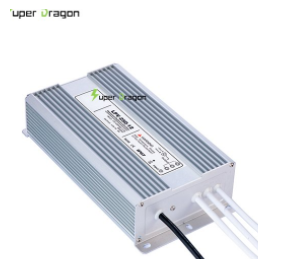Switching power supply, also known as switching power supply and switching converter, is a high-frequency electric energy conversion device and a kind of power supply. Its function is to convert a level of voltage into the voltage or current required by the user through different forms of architecture. Today we come to understand the basic composition and working principle of switching power supply.
Basic component
The switching power supply is roughly composed of four parts: the main circuit, the control circuit, the detection circuit, and the auxiliary power supply.
1. Main circuit
Impulse current limit: limit the impulse current on the input side when the power is turned on.
Input filter: Its function is to filter the clutter that exists in the power grid and prevent the clutter generated by the machine from being fed back to the power grid.
Rectification and filtering: Directly rectify the AC power of the grid into a smoother DC power.

Inverter: Convert the rectified DC power into high-frequency AC power, which is the core part of the high-frequency switching power supply.
Output rectification and filtering: According to the needs of the load, provide a stable and reliable DC power supply.
2. Control circuit
On the one hand, samples are taken from the output terminal and compared with the set value, and then the inverter is controlled to change its pulse width or pulse frequency to stabilize the output. On the other hand, according to the data provided by the test circuit, it is identified by the protection circuit to provide The control circuit performs various protection measures on the power supply.
3. Detection circuit
Provide various parameters and various instrument data in operation in the protection circuit.
4. Auxiliary power supply
Realize the software (remote) start of the power supply, and supply power for the protection circuit and the control circuit.
Working principle
The working process of the switching power supply is quite easy to understand. In the linear power supply, the power transistor is operated in linear mode. Unlike the linear power supply, the switching power supply allows the power transistor to work in an on and off state.

Compared with the linear power supply, the more effective working process of the switching power supply is achieved by "chopping", that is, the input DC voltage is chopped into a pulse voltage whose amplitude is equal to the amplitude of the input voltage. The duty cycle of the pulse is adjusted by the controller of the switching power supply.
Once the input voltage is chopped into an AC square wave, its amplitude can be increased or decreased by the transformer. The output voltage value can be increased by increasing the number of secondary windings of the transformer. Finally, after these AC wave forms are rectified and filtered, the DC output voltage is obtained.
The main purpose of the controller is to keep the output voltage stable, and its working process is very similar to that of a linear controller. That is to say, the functional blocks, voltage reference and error amplifier of the controller can be designed to be the same as the linear regulator. The difference between them is that the output of the error amplifier passes through a voltage/pulse width conversion unit before driving the power tube.
Switching power supplies have two main operating modes: forward conversion and boost conversion. Although the layout of their parts is very different, the working process is very different, and each has its own advantages in specific applications.